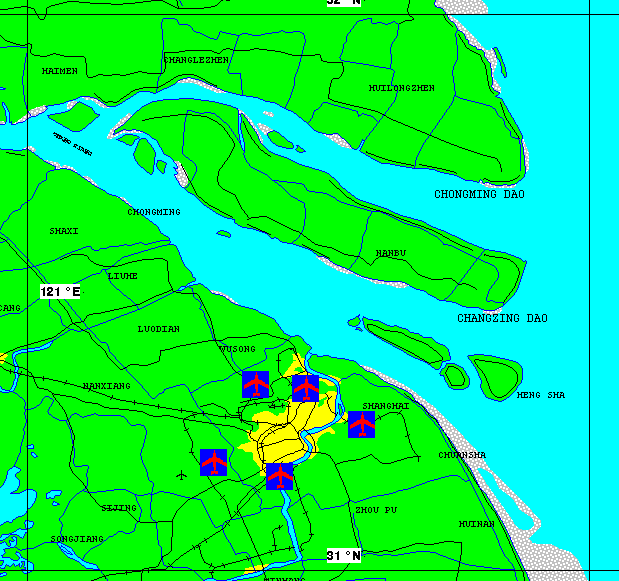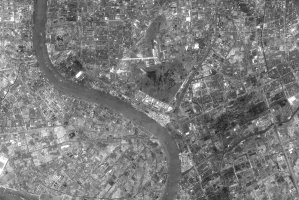


|

|
People's Liberation Army Air Force |
The new international airport in the Pudong New Area of Shanghai became operational on 01 October 1999 with the completion of the project's first phase of construction. The new 24-hour airport features a 4,000- x 60-meter (13,123 x 196 feet) runway, and is located in the city's new financial district across the Huangpu River from Shanghai's historic Bund. The new Shanghai Pudong International Airport is located about 45 km from the City Center, and about 50 km from Hongqiao Airport. The Pudong Airport will complement Shanghai's existing Hongqiao Airport, though most international flights will eventually shift to Pudong. The airport will handle 20 million passengers and 750,000 tonnes of cargo annually by 2005 and eventually 80 million passengers and five million tons of cargo after expansion. In 1990, Shanghai Pudong was nothing but farmland, but it is now a cosmopolitan hub of activity with a population of 1.5 million people.
Shanghai Pudong New Area refers to the triangular area on the southwest of the estuary of the Yangtze River, boadering the East Sea and backed by the Yantze River Delta. In 1990, the Chinese central government made the strategic decision to develop and open up Shanghai Pudong, making it serve as the "Dragon Head" in the economic advancement of the Yangtze River Basin and turning Shanghai into one of the economic, financial and trade centers of China and of the Asia-Pacific Economic Region. Pudong has built 10 major infrastructure projects, and has another 10 under way, including the international airport, a subway, and a pedestrian passage across the Huangpu River separating the area from downtown Shanghai. Of the world's top 500 corporations, nearly 100, including General Motors, Volkswagen, BASF, and Intel, have already opened some 180 subsidiaries in Pudong, with a total contractual overseas investment of more than $8 billion. Some multinationals have moved their Asia and China headquarters to the area.



